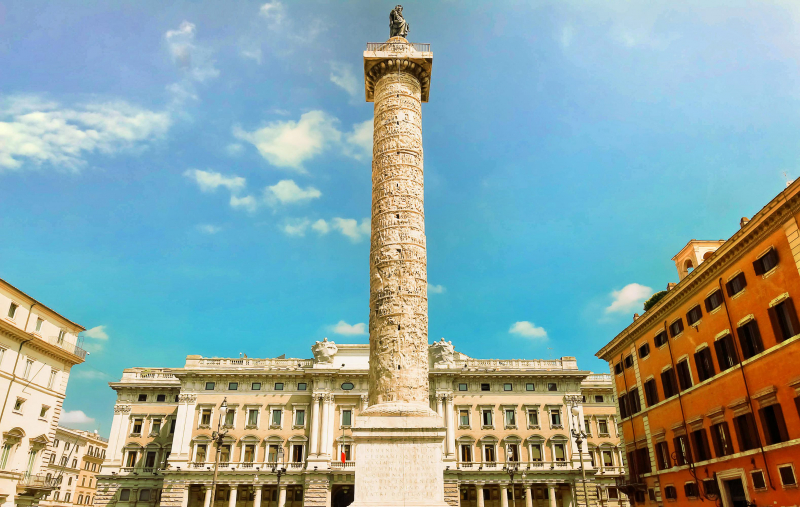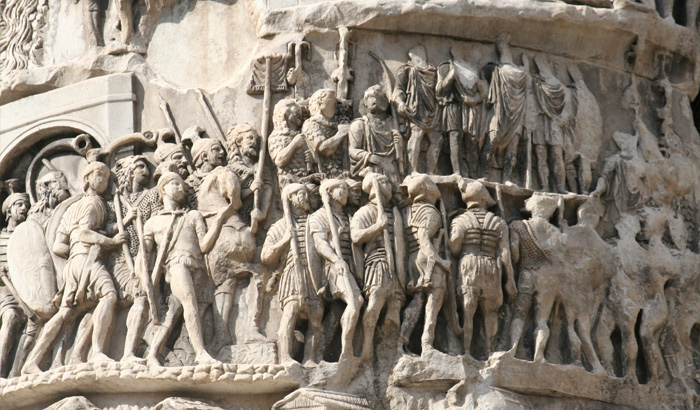Column Of Marcus Aurelius
Column of Marcus Aurelius is the next most significant pieces of ancient Roman art and sculpture. As was already mentioned, the Trajan column served as the model and design inspiration for this column. It serves as a monument to Emperor Aurelius's triumph against the German and Sarmatian tribes. It is situated next to Emperor Marcus's cremation in Rome's Piazza Colonna. With a base of around 33 feet, this column has a total height of 97 feet; 130 feet of that height are above the earth, leaving 9.8 feet below the surface. There are 200 stairs inside the column, a viewing deck at the top, and an Emperor statue at the very top. On the exterior wall, numerous images and depictions are created to tell the story behind each scenario. The most well-known one is Marcus' account of the Danubian and Marcomannic Wars, which depicts every stage of the conflict and includes a scene in which the army crosses the Danube to win.
The actual date of construction is uncertain because the original scripts and inscriptions from the column were sadly lost by the 16th century. But according to one of the original script's portrayals, the building was finished by 193 AD. Pope Sixtus the Fifth restored the damaged column in 1589 CE, replacing the statue of Emperor Marcus with the statue of the apostle St. Paul. The first one was destroyed in the sixteenth century, and Pope Sixtus the fifth reconstructed it in 1589 CE by switching the figure of Emperor Marcus for the apostle St. Paul.












